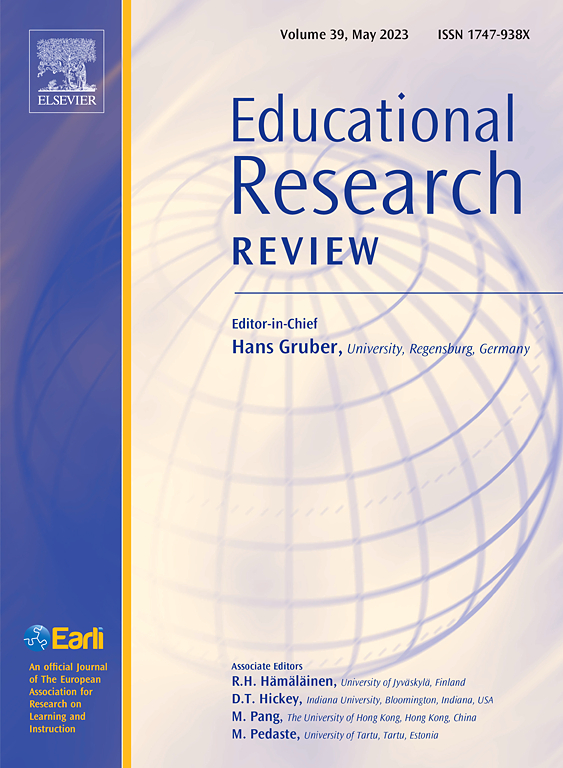What is next in mobile-assisted reading? Insights from a decade of eye tracking research into cognitive processes
IF 10.6
1区 教育学
Q1 EDUCATION & EDUCATIONAL RESEARCH
引用次数: 0
Abstract
Mobile-assisted reading research has seen a growing trend in the use of eye tracking to explore readers’ performance traditionally examined by offline accuracy measures. Through its ability to provide detailed records of online processing behaviours at a high temporal resolution, eye tracking offers new insights into real-time cognitive processes associated with mobile digital reading, which offline measures are unable to do. Despite its unique advantages, previous systematic reviews have mainly focused on offline performance to compare mobile-assisted versus traditional reading, with a lack of attention to online performance using eye tracking in the literature. As interest in and the availability of eye tracking continues to expand, a systematic review is timely to identify the issues that have already been addressed, if research gaps remain, and any warranted future work in this regard. In doing so, the current review aims to provide a comprehensive and systematic overview of mobile-assisted reading research using eye tracking from 2010 to 2022, including article information, research focus, technology, and method. Additionally, this review critically discusses the limitations of previous research and proposes the avenues for future endeavours.
移动辅助阅读的下一步是什么?十年眼动跟踪研究对认知过程的启示
在移动辅助阅读研究中,使用眼动跟踪来探索传统上通过离线准确性测量来检验的读者表现已成为一种日益增长的趋势。眼动仪能够以较高的时间分辨率提供在线处理行为的详细记录,从而为了解与移动数字阅读相关的实时认知过程提供了新的视角,而离线测量则无法做到这一点。尽管眼动仪具有独特的优势,但以往的系统性综述主要集中在离线性能上,对移动辅助阅读和传统阅读进行比较,文献中缺乏对使用眼动仪的在线性能的关注。随着人们对眼动仪的兴趣和眼动仪可用性的不断扩大,现在是时候进行一次系统性综述,以确定已经解决的问题、是否仍存在研究空白,以及未来在这方面需要开展的工作。为此,本综述旨在对 2010 年至 2022 年使用眼动仪进行的移动辅助阅读研究进行全面系统的概述,包括文章信息、研究重点、技术和方法。此外,本综述还批判性地讨论了以往研究的局限性,并提出了未来努力的方向。
本文章由计算机程序翻译,如有差异,请以英文原文为准。
求助全文
约1分钟内获得全文
求助全文
来源期刊

Educational Research Review
EDUCATION & EDUCATIONAL RESEARCH-
CiteScore
19.40
自引率
0.90%
发文量
53
审稿时长
57 days
期刊介绍:
Educational Research Review is an international journal catering to researchers and diverse agencies keen on reviewing studies and theoretical papers in education at any level. The journal welcomes high-quality articles that address educational research problems through a review approach, encompassing thematic or methodological reviews and meta-analyses. With an inclusive scope, the journal does not limit itself to any specific age range and invites articles across various settings where learning and education take place, such as schools, corporate training, and both formal and informal educational environments.
 求助内容:
求助内容: 应助结果提醒方式:
应助结果提醒方式:


